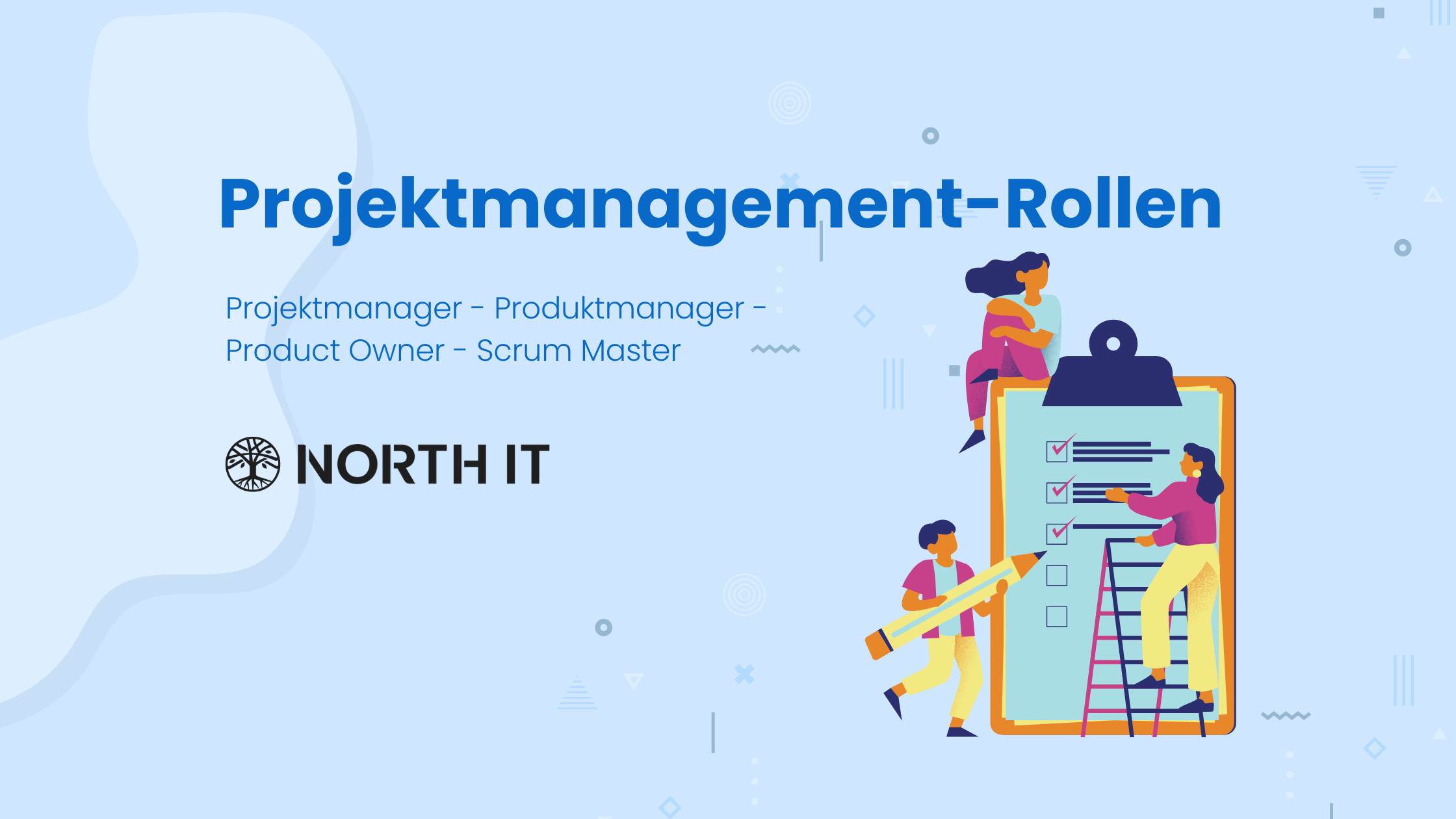Project Management Roles Compared: Who Does What?
In the world of modern project management, there are numerous roles that may seem similar at first glance but actually have distinct tasks and responsibilities. Particularly in IT and software development, the differences between Project Manager, Product Manager, Product Owner, and Scrum Master are crucial to the success of a project. In this article, we at North IT Group provide a clear overview and explain why a solid understanding of these roles is essential for effective collaboration.
The Project Manager: Navigator and Generalist
The Project Manager is responsible for the overall planning, execution, and control of a project. Their focus is on the "how"—ensuring that objectives are met within a set budget, timeline, and quality standards. Their main tasks include:
- Project Planning: Defining scope, milestones, and timelines
- Resource Management: Coordinating teams and managing budgets
- Risk Management: Identifying and mitigating risks
- Stakeholder Communication: Ensuring all involved parties are informed
- Quality Control: Reviewing project outcomes
When Do You Need a Project Manager?
A Project Manager is particularly important in traditional waterfall projects but can also play a vital role in agile teams, especially for complex, long-term projects with many dependencies.
If you're looking to have a website created or a homepage developed, an experienced Project Manager ensures smooth execution and coordinates all specialists involved.
The Product Manager: Strategist with a Market Focus
While the Project Manager focuses on execution, the Product Manager is concerned with the "what" and "why" of a product. Acting as a bridge between the market, business, and development teams, the Product Manager’s key responsibilities include:
- Market Analysis: Identifying customer needs and trends
- Product Strategy: Defining the long-term direction of a product
- Cross-Department Collaboration: Working with marketing, sales, and development
- Product Lifecycle Management: Monitoring and improving the product
- Product Profitability: Ensuring commercial viability
Product Manager vs. Project Manager: The Difference
The Product Manager is often confused with the Project Manager. While the Product Manager focuses on long-term strategy, the Project Manager handles the tactical execution of tasks within a project.
A Product Manager is especially crucial when developing a website to ensure it aligns with market demands and user needs.
The Product Owner: The Agile Link
The Product Owner plays a key role in Scrum teams, focusing on defining and prioritizing requirements. Their main tasks include:
- Creating and Managing the Product Backlog (a prioritized list of development tasks)
- Prioritizing Features and Tasks
- Communicating with Stakeholders and Customers
- Maximizing Product Value for Customers
- Close Collaboration with the Development Team
Difference from the Product Manager
While the Product Manager makes strategic decisions about the entire product, the Product Owner works on an operational level, ensuring the development team builds the right features at the right time.
The Scrum Master: Agile Coach and Facilitator
The Scrum Master is not a traditional project manager but rather a coach and mentor for the development team, ensuring adherence to agile principles. Their main responsibilities include:
- Facilitating Meetings (e.g., Daily Scrum, Sprint Planning, Retrospectives)
- Removing Obstacles and Bottlenecks for the team
- Promoting a Self-Organized Work Approach
- Shielding the Team from Unnecessary External Influences
- Coaching and Training Team Members in Agile Methods
Scrum Master vs. Project Manager
A Scrum Master does not directly oversee project plans or budgets—that’s the Project Manager’s role. Instead, they focus on fostering an effective agile environment.
Which Role is Right for Your Business?
The choice of roles depends on a company's working methods and structure:
- Traditional Project Management (e.g., Waterfall): Greater emphasis on the Project Manager role
- Agile Development (e.g., Scrum): Product Owner and Scrum Master are crucial
- Product-Oriented Companies: The Product Manager plays a key role
Many businesses combine multiple roles to find the optimal balance between strategy, execution, and operational efficiency.
Particularly for companies looking to create a professional website or hire a web design agency, clearly defining these roles ensures efficient project execution and results in a high-performance, user-friendly website.
Conclusion: Clear Roles for Greater Project Success
Whether it’s a Product Manager, Project Manager, Product Owner, or Scrum Master, each role plays a vital part in project success. Companies should identify the tasks they need to cover and ensure that each role is filled with clearly defined responsibilities.
At North IT Group, we rely on tailored solutions and strategic role distribution to execute our projects efficiently and successfully. If you’re looking to have a website developed or a homepage created, we’re here to assist with our experience and expertise!
Image source: canva.com



